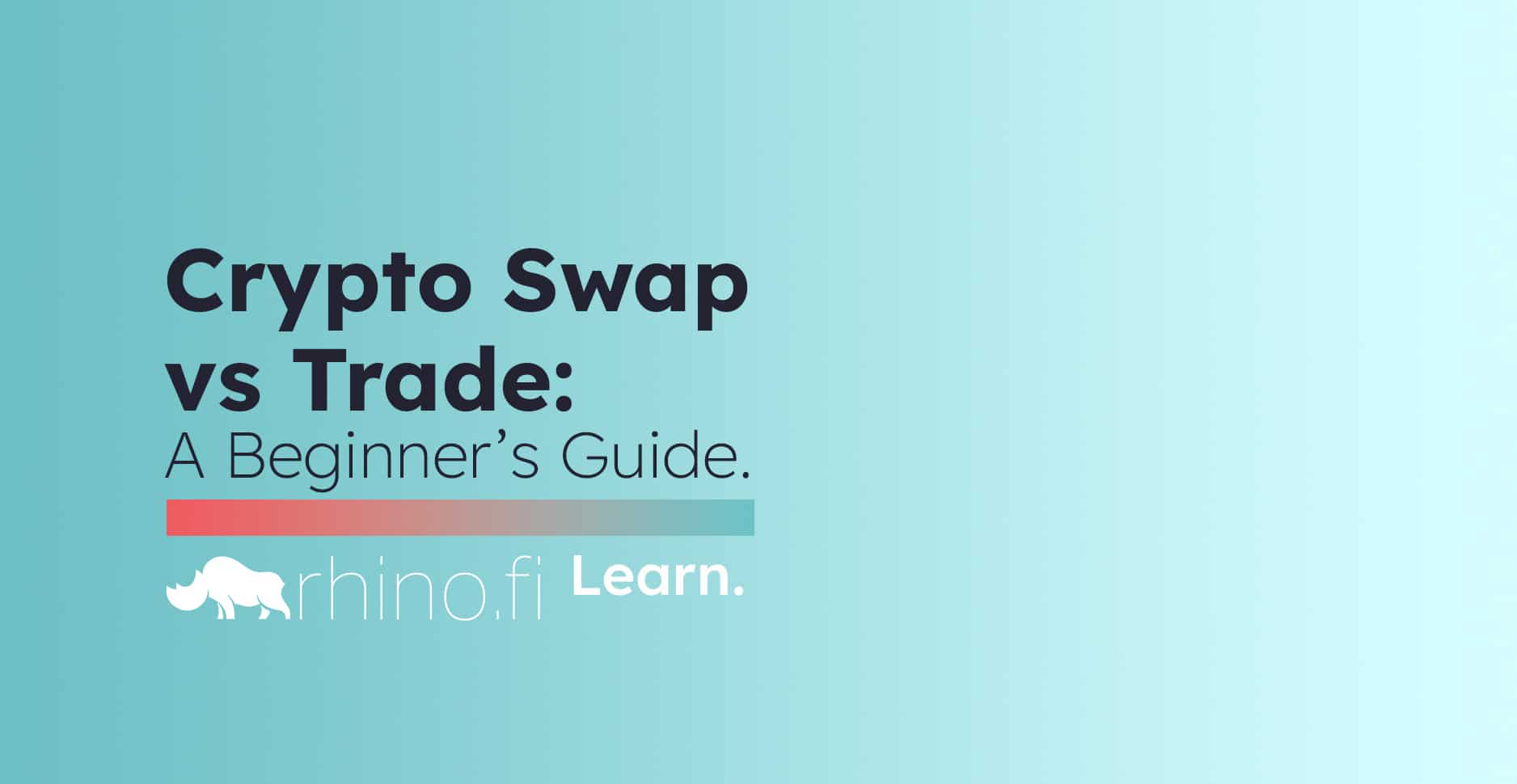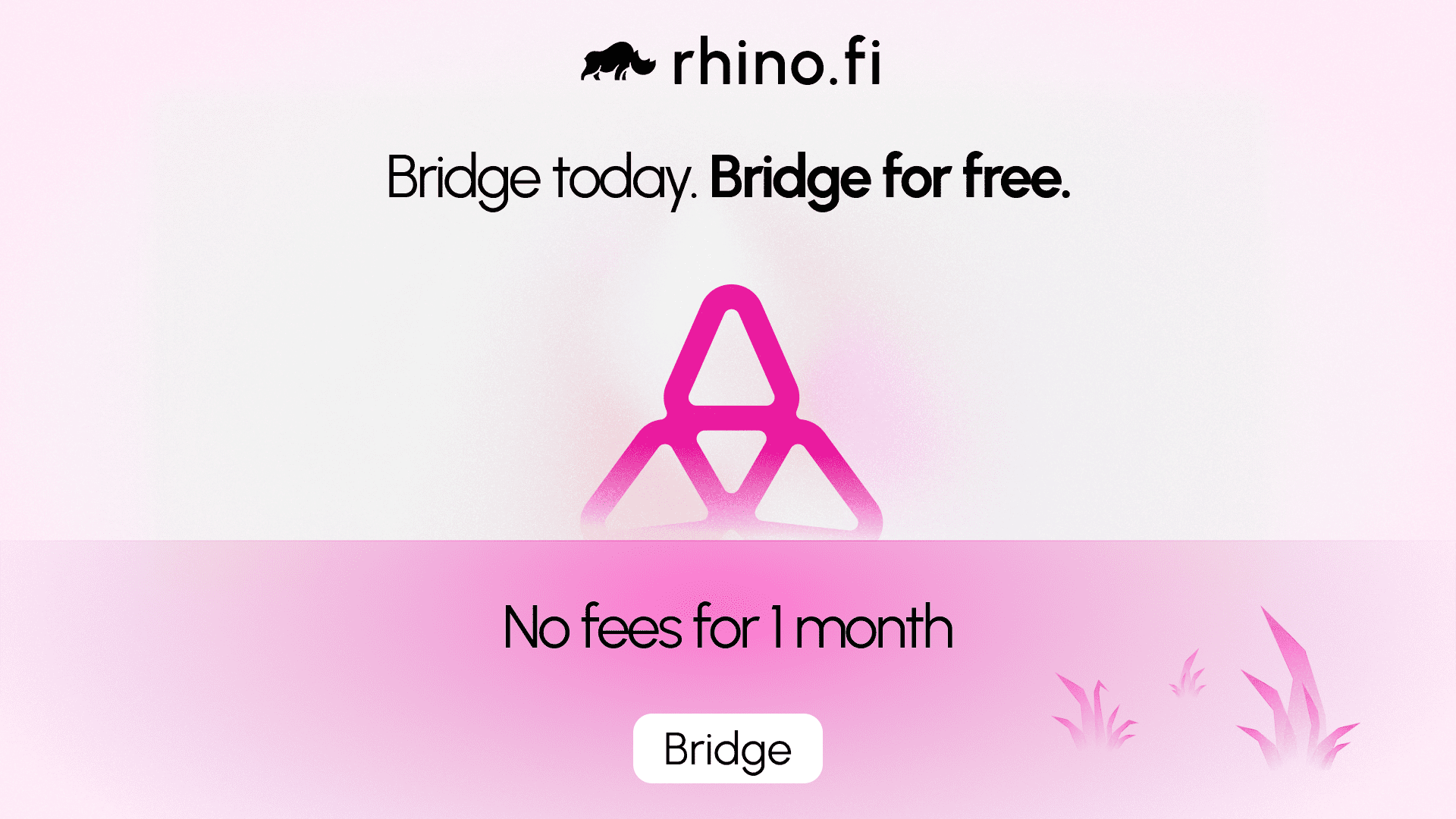Swaps and trades are very similar in the cryptoverse. So similar, in fact, that they are often confused.
Both allow you to obtain the assets you want, and both can be conducted quickly and seamlessly through apps such as rhino.fi.
However, there are important differences to bear in mind. And in this edition of RhinoLearn we’ll cover each of the major distinctions, so you know which option is best for you.
What is a swap?
A swap simply exchanges one asset for another as soon as possible, at a price determined by the market.
The initial exchange of fiat for crypto is a very basic form of swap. When you sign up to a page like Binance, it usually works as follows:
- You deposit your fiat currency. Let’s say, for this example, you deposit £100.
- The exchange asks which crypto asset you want. For this example, let’s say you choose bitcoin.
- Once you’ve made your choice, the exchange will tell you how much bitcoin you’ll get for your £100.
- You accept the transaction, or reject it.
It works this way when you’re swapping one asset for another, too.
So if, let’s say, you want to swap Bitcoin for ETH on a decentralised exchange like Uniswap or SushiSwap, the exchange’s conversion engine will show you how many ETH your Bitcoin is worth right now.
Some exchanges manage the swap process using a technology called automated market makers, or AMMs. We explain this in a separate blog post here.
Ok, now what is a trade?
A trade gives the user more options than a swap, and allows them to determine the exact price at which they would like to make the exchange.
One of the most common trading options is a market order. This is essentially the same as a swap: you agree to make the trade at whatever price the market specifies at the time.
The price is shaped by order books, which facilitate trade between buyers and sellers. Essentially, an order book is a log that allows all participants to set their buy and sell prices, and then matches buyers with sellers.
As more and more people join the market, a kind of consensus emerges around each currency. The market price represents an equilibrium, the point at which both buyers and sellers are willing to either buy or sell an asset.
When someone then lodges a market order, this price will determine what they buy or sell for. Those who choose market orders are often looking for quickfire opportunities: it could be that the value of their desired currency is going up, or the value of their held currency is falling. They want to make the trade before the market moves too far away from them.
Other people, however, are more motivated by value than opportunity. They want to trade one currency for another, but only on their terms. They’re happy to wait for the market to come round to their desired valuation.
In this case, a limit order might be more appropriate. With this order type, traders can request that a trade happens in the future, when the market has reached a particular point.
In the case of a limit order, the trader specifies the maximum price at which they’re willing to buy, or the minimum price they’re willing to sell. Once the price of the asset has reached their desired threshold, their order is executed.
Finally, there’s the stop order, which is designed to cap losses. Essentially, the trader specifies the amount they’re willing to lose. So, if they’ve bought an asset at a particular price and the value starts to drop, they’ll tell their broker how low they’re prepared to go before selling, and the figure will be expressed as a percentage.
There are other trading options too, which are adapted to different levels of expertise. The real point to bear in mind here is that while a swap is a very simple and immediate exchange, based on current market conditions, a trade allows you to pick the timing and value of your trade.
There are pros and cons to each, of course. A swap is easier to make than a trade, it will always be executed at market price and goes through as quickly as possible. If you request a stop or limit order, there’s no guarantee the market will ever come round to your way of thinking.
Overall, however, the two options complement one another well. While swaps are ideal for less-experienced users, trades offer more seasoned crypto fans with flexibility and control.
So in summary:
- Trades are more complex than swaps, but offer more options.
- Swaps are designed for immediate transactions, while trades can be set for particular times, prices and market conditions.
If you’ve found this little chunk of RhinoLearn interesting, be sure to read our guide to gas fees, which explains the fees that can be imposed on your transactions (and tells you how platforms like rhino.fi avoid them).
We’ll offer more detailed trading guides in future issues of RhinoLearn, so stay tuned!





